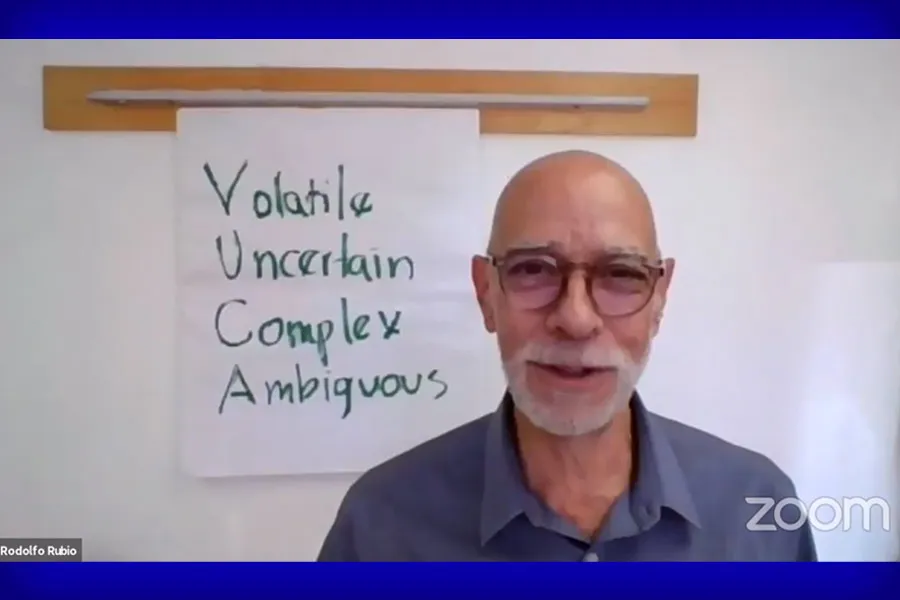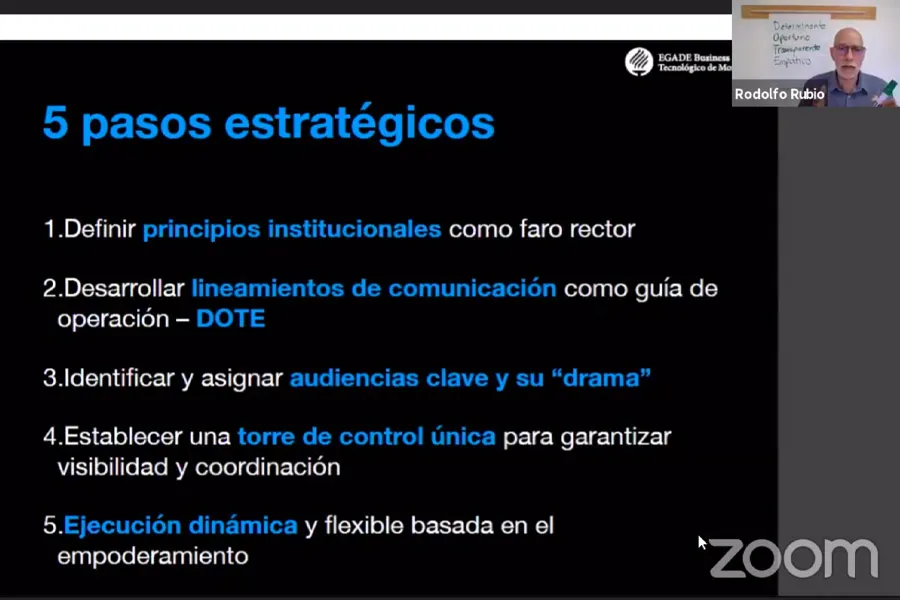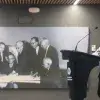What are communications in crisis like in the context of COVID-19? What are the major challenges of organizations in this area?
Rodolfo Rubio, Vice President of Communications at Tec de Monterrey, shares some principles to consider and also explains how the Tec is facing the challenge.
Through the Communications during COVID-19 webinar, Rubio commented that in the context of the pandemic crisis communications occur in an environment of uncertainty and volatility that will last a long time.
“What do we want to do with communications in times of crisis? Promote rational, organized, and committed behavior that contributes to its resolution,” he said.
COMMUNICATIONS IN TIMES OF UNCERTAINTY
Rubio explains that the pandemic means we’re living in a VUCA (Volatile, Uncertain, Complex, and Ambiguous) environment, which he described as follows:
- Volatile
He said that what holds true today does not tomorrow. Immediately, suddenly, the forces taking place manifest themselves with intense energy and speed, which changes the game for us.
- Uncertain
He says we don’t know exactly what’s going to happen because we’re experiencing a situation unfaced by humanity, institutions, and families before.
- Complex
All situations are multifactorial. Solving an issue doesn’t just have to with a single cause. Causality is very complex, and there is an interrelationship of factors, he mentions.
- Ambiguous
He points out that the situation is no longer black or white. There’s a lack of clarity and when people tell you to be clear about what you want to say, you won’t be able to

The VP then listed 3 major challenges that organizations face to communicate effectively:
1) A general lack of confidence
When people lose confidence, their behavior is irrational, he says.
2) Information overload
“There comes a time when people no longer want to read the messages because everybody is an expert, influencer, or publisher. As an institution or manager, you’re competing with thousands of people who are publishing information,” he shared.
3) It’s an age of total transparency, connectivity, and accountability
“Today, we can no longer keep secrets. What happens today will be found out. We are all connected. Our cellphones turn us all into reporters, and responsibility is very simple. Someone will pay. Someone will be responsible for what wasn’t reported.”
STRATEGIC STEPS
During the webinar, he also shared the 5 strategic steps he took at the Tec to achieve effective communication.

1) Define institutional principles as a guiding rule
“Those great things that we decided to prioritize, in our case safety in our community, the commitment to continuity of academic excellence, and doing things that are true to the values of the Tec.”
2) Develop communications guidelines as an operating guide (DOTE)
There are 4 principles the communications team called DOTE, an acronym for:
Determined - What we communicate cannot be ambiguous.
On Time - Not before nor after, but when you have enough elements for communication to have an impact.
Transparent - We say everything we have to say. What is everything? Everything that is relevant to the context of the statement.
Empathetic - We cannot write a statement that speaks as if everything were fine. Empathy has a lot to do with putting ourselves in other people’s shoes.
3) Identify and assign key audiences and be very clear about their “drama”
Rubio explains that you need to know who your audiences are and explain what each audience is worried about. He gave the example of the drama for teachers of having to switch from a face-to-face teaching model to a digital one.
4) Establish a single control tower
He says that this is in order to have visibility and coordination. “This way, you’ll have on overview of everything that’s being said so you can make sure that DOTE is being accomplished, that the institutional principles are met, and that we’re consistent with the message we want to send.”
5) Dynamic and flexible execution based on empowerment
“We are experiencing VUCA and trying to be in full control of the situation is impossible. All your organization’s spokespeople are looking at their audiences. Maintain a dynamic, flexible, and empowering execution.
“Don’t try to control everything. Focus on the milestones marking the path for what comes next”, he explained.

The webinar was part of the Facing up to the challenge: Leadership in the context of COVID-19 series organized by EGADE Business School, where Rubio will deliver a second webinar on June 26.
In that webinar, the VP will address topics dealing with executing communications in times of COVID-19, the importance of processes, the platforms to reach audiences, the importance of captivating storytelling, and the balance between perfection and sufficiency. Click here to register.
READ MORE NEWS AT CONECTA:





